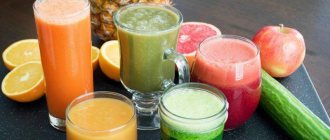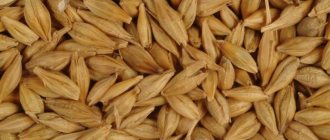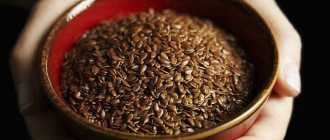Painful sensations and the prospect of dire consequences of gastritis and gastroduodenitis prompt patients to consider resorting not only to traditional medicine. There are herbal remedies that give the desired result in the fight against the disease. Folk wisdom and scientific research have repeatedly proven the benefits and healing properties of the product. Therefore, it is worth studying the treatment of gastritis with propolis.
Bees collect propolis from sticky tree buds in the spring and process it by fermentation into a sticky substance that they use to seal their hives.
Beneficial properties of propolis for gastritis
Propolis (bee glue) is produced by bees to disinfect, insulate and seal the cracks of the entrance. Collected by insects in the spring from buds on trees, supplemented with bee enzymes. Among scientists there is still no unanimous, complete theory about the appearance of this resinous substance.
The color can range from dark green to brown, and the taste is bitter and pungent. Over time, the substance becomes harder and more brittle in storage.
Bee products have long been known for their miraculous properties. And propolis takes first place in its use for medicinal purposes. It contains vitamins (A, C, E, PP), flavonoids and many microelements.
Medicines made from bee glue act as antiseptics, anti-inflammatory, antimicrobial (they fight the causative agent of gastritis - the bacterium H. Pylori). They help eliminate irritation in the mucous membrane of the stomach and intestines, as well as heal ulcers, regulate acidity and produce digestive enzymes. This substance is considered a biostimulant. There is a lot that can be listed.
Bee products have long been known for their miraculous properties. And propolis takes first place in its use for medicinal purposes.
Gastritis and its features
Gastritis is a dystrophic disease of the stomach, in which the mucous membrane of the gastrointestinal tract is damaged, accompanied by a strong inflammatory process and degenerative changes. The progression of the disease very often leads to dysfunction of the stomach and intestines, and the lack of treatment can cause the development of pancreatitis, hepatitis and even cardiovascular disease.
The most common classification of this disease is its division into an acute chronic form, however, it is also necessary to take into account this type of classification - according to the functional state, because in this case gastritis can be distinguished with increased, decreased or normal secretion, which is what doctors start from when prescribing treatment.
Important! Here it must be said right away that propolis will be useful for gastritis with both increased and decreased secretion, but there will be some nuances in this issue, which can be found out below.
You can always purchase propolis extract 20% in Ukraine from Us, at the family apiary “Vesely Hornet” by phone:
+380984298830 +380955638797
The main causes of the disease are often stress and poor diet, but gastritis very often occurs against the background of the bacterium Helicobacter pylori, which is notable for its ability to survive in an acidic environment. And here it must also be said that propolis for gastritis is very useful, because it has pronounced antimicrobial activity and bactericidal action, that is, it is able to inactivate the growth and activity of this bacteria, thereby eliminating the main cause of the development of the disease.
Rules of application
You need to start treating gastritis with propolis responsibly and consciously. You should strictly observe the duration of the course, the conditions of admission, and adhere to the specified amount. Before starting, study contraindications and consult with your doctor.
If you are determined to take this natural remedy, it is important to remember the following features.
- These are not pharmaceutical drugs or painkillers, so there is no need to wait for immediate disappearance of pain. Propolis products act gradually.
- It is necessary to carefully understand which recipe for preparing the product is suitable for which form of gastritis.
- Treatment lasts on average 4 weeks (but, depending on the type of disease, the duration of the course may be different) - it is during this period that, with proper and regular use of the drug, improvement or recovery occurs.
- Gastritis often returns, so it is recommended to repeat the course 2-3 times a year in the first 5 years, then take preventive courses once a year.
Propolis is used not only in the stage of remission as a prophylaxis, but also in the stage of exacerbation of the disease.
A little about propolis
Before talking about how gastritis is treated with propolis, it is necessary to say that this beekeeping product is also called bee glue, because it has an adhesive base and with its help bees seal cracks in the hives, thereby protecting them from dust and wind , rain, and insect intrusion.
What makes this product unique is its composition, which no scientist has yet been able to determine exactly, it is so diverse. It is known that the basis of propolis is made up of vitamins, microelements, enzymes, organic and inorganic compounds, amino acid residues, and so on. It is precisely because of such a rich composition that the product has such a wide spectrum of action, which allows it to be used to treat just dozens of diseases known to mankind. And the fact that propolis is used in the treatment of gastritis is also based on the fact that it has an analgesic, antispasmodic, disinfecting, antiseptic and regenerating effect on the body, that is, it has an effect that allows you to cope with both the symptoms of the disease and the causes, who called her.
Preparation of alcoholic tinctures and elixirs
Ready-made alcohol tincture of propolis can be bought at the pharmacy. But you can prepare this medicine yourself. It will not be inferior in quality and properties to what you bought, and maybe, on the contrary, it will be better, because it was prepared with your own hands. Bee glue infused with alcohol is approximately 85% digestible.
Preparatory work
- First, a piece of propolis should be placed in the freezer for 2-3 minutes so that the product becomes fragile.
- Grate, chop with a knife or in a coffee grinder.
- Pour the resulting substance with water. Leave for a few minutes.
- Pour out the water along with everything that has floated up (everything you need remains at the bottom).
- Dry the sediment and begin preparing the medicine according to the recipe that suits you.
You can do without these steps and just grind it if you don’t want to mess around, and the question of getting rid of the excess is not fundamental.
Recipe No. 1
- Pour 10 g of crushed bee glue into 100 ml of 70% medical alcohol or vodka (good quality!) and mix.
- Pour the resulting mixture into a container and leave to infuse for 14 days in a completely dark place where there is not a single ray of light.
- During the infusion process, the substance must be shaken well every other day.
- At the end of the period, strain - the remedy is ready.
Recipe No. 2
- Mix 100 ml of medical alcohol (or vodka of appropriate quality) with 10 g of propolis prepared in advance.
- Heat in a water bath to 500 C (do not allow it to boil!).
- Strain and place in a dark place (can be in the refrigerator).
- Before each use, the elixir must be diluted with water, since it is a concentrated product.
Recipe No. 3
- Mix 100 ml of 70% alcohol with 20 g of propolis.
- Infuse in a place protected from light for 2 days.
- Infused propolis for gastritis is recommended to be taken 30 minutes before. before meals or after 20 minutes. after, 3 times a day, 40 drops. Treatment of gastritis with propolis in alcohol should not last longer than 2 months.
Decoctions
There are other propolis decoctions that you need to know when thinking about how to treat gastritis. They are usually recommended for use by those people who suffer from gastritis with low acidity, which is accompanied by pain, digestive disorders, heartburn or belching.
Such dosage forms can not only eliminate the unpleasant symptoms of the disease, but also normalize the functioning of the gastrointestinal tract. They can be found as independent dosage forms or in mixtures with other healing ingredients.
Propolis oils and oil extracts
Not all oil extracts are suitable for internal use, and not all are suitable for treating gastritis. Thus, propolis oil based on sea buckthorn is taken when the pancreas malfunctions.
For external treatment, oil-based elixirs are used:
- sunflower;
- burdock;
- flaxseed
Before each preparation of the following remedies, you still need to prepare crushed propolis in advance.
Propolis extract in olive oil:
- Heat 100 ml of olive oil in a water bath.
- Mix thoroughly with 20 g of bee glue.
- Keep the mixture in a water bath for 1–8 hours. The longer, the higher the quality of the extract.
- Let cool and strain several times. At the final stage of preparation, the product will be viscous and yellow-green in color.
In pharmaceutical plants, the heat treatment process lasts about 50 hours. Instead of olive oil, you can use rosehip oil.
It is recommended to take 1 tbsp. l. one hour before each meal.
Creamy propolis oil:
- Bring 100 g of butter (at least 72% fat) to a boil and set aside. Allow to cool to 800 C.
- Mix with 15 g or 20 g of bee glue.
- Heat the resulting mixture again with constant stirring to 800 C and set aside again.
- Strain and pour into a container prepared in advance.
If you cannot tolerate the bitterness of the resulting product, you can add honey. Take 3 times a day, one and a half hours before meals, 1 tbsp. l. for one and a half months.
If you choose propolis oil treatment, then you need to follow a special diet
Symptoms and treatment of esophageal erosion
As a result of the penetration of gastric juice into the tubular canal connecting the oral cavity with the stomach, an inflammatory process of the mucous membrane occurs, called esophageal erosion. Gastric juice contains hydrochloric acid, which causes irritation of the mucous membrane and provokes the formation of erosion. Most people do not even realize that organ destruction is occurring in their body, since at the first stage of the disease the patient does not feel any symptoms. This is dangerous for the patient and can cause adverse effects and complications.
Abnormalities in the functioning of the stomach can cause burns from gastric juice to other organs.
Esophageal erosion is a disease that should be treated immediately, as it can cause serious complications. But to avoid this disease, you should familiarize yourself with a number of reasons why erosion may begin. These causes include the following diseases and factors:
- excessive weight;
- lack of adipose tissue;
- viral infection;
- as a result of a chemical burn;
- increased intrauterine pressure;
- due to disease, shortening the length of the esophagus;
- sphincter dysfunction;
- curvature of the cervical spine;
- weakness of the muscles of the organ walls;
- operations on the gastrointestinal tract;
- atrophy of the left side of the liver;
- use of certain medications.
With erosion of the esophagus, the first thing the patient observes is heartburn, which continues constantly and occurs regardless of the quality and quantity of food eaten. In addition to heartburn, esophageal erosion is accompanied by the following symptoms:
- belching;
- nausea caused by stomach acid entering the esophagus;
- painful sensations when eating food;
- hiccups;
- increased salivation;
- acute and aching pain that occurs in a patient who is in a horizontal position or while eating.
Erosion of the esophagus with a severe form is accompanied by vomiting with blood of a pronounced scarlet color.
Erosion of the esophagus is classified according to different criteria. Due to the formation, erosive damage has two types: the first - erosion of the mucous membrane is an individual ailment, and the second - the damage is a symptom of another disease. In addition, esophageal erosions are divided into subtypes:
- malignant;
- other changes not associated with malignant tumors.
These subspecies, in turn, have varieties:
- erosive-hemorrhagic gastritis;
- erosive gastritis;
- single, multiple, linear, polypoid and flat lesions of chronic form.
Diagnostics
Before treatment for esophageal erosion begins, diagnostic tests must be performed. The doctor collects information about the history of the disease, the patient’s living conditions and illnesses he has suffered, and asks the patient about the accompanying symptoms. When talking with a patient, for an accurate diagnosis, the doctor needs to know the location of the pain (sternum, neck or spine) and the nature of the pain (permanent or temporary). The doctor examines the condition of the abdominal organs and esophagus, examines the neck and visually examines the skin and chest.
To confirm the diagnosis, the doctor will need to conduct a biochemical blood test, a test for occult blood in the stool, a urine test, and a complete blood count. An examination is carried out using X-rays to identify a hernia or reflux of the esophagus, colonoscopy and esophagotonocymography.
Esophageal erosion can be treated using both traditional medicine and folk remedies. In any case, the patient should not self-medicate and therapy should be prescribed by a doctor after a diagnostic examination and history taking. Drug treatment is based on the use of alginates, antacids, parieties and prokinetics. Medicines used in combination help reduce the level of acidity in the stomach and esophagus.
Alternative medicine is based on the use of healing decoctions, infusions, and juices made from the gifts of nature. However, therapy for esophageal erosion will not be complete if the patient neglects proper nutrition. The basis of treatment is a diet, which includes a list of permitted and prohibited foods.
Drug treatment
Treatment with medications should be carried out exclusively as prescribed by a doctor. The specialist may prescribe the following types of medications: prokinetics, antacids and alginates. When treating a patient with Almagel, which is the main component of the antacid, the patient experiences vomiting, nausea and pain, i.e., the signs of the disease are suppressed.
To create a protective film on the walls of the esophagus, doctors prescribe alginate, which has a beneficial effect on the tubular organ. And to improve the act of defecation and tame the duration of contact of the tubular organ with hydrochloric acid, the patient is prescribed drugs based on alginate (Domperidone, Motilium). The course of drug treatment is relatively long.
Folk remedies
Therapy with folk remedies has also gained popularity for esophageal erosion. The most effective product is potato juice, which should be taken 50 ml in the morning, lunch, evening and at night. The duration of treatment is 60 days, after which a break is taken and therapy is resumed. At least 4 courses should be completed during the year. To extract liquid from potatoes, you need to peel them and grate them on a grater of any size, then put the mass in cheesecloth and squeeze.
A good folk remedy is a decoction of linden flowers, fireweed, medicinal marigolds, taken 20 grams each, and horsetail, celandine, St. John's wort, caraway, valerian roots, fennel and chamomile, of which you need 10 g. Grind the ingredients and pour into glass container, after thorough mixing, take one spoon of the mixture and fill it with half a liter of water. Put on the fire and cook for 5-7 minutes, then remove from the stove and leave to brew for 3 hours. After a while, strain the liquid and take the finished solution 4 times. per day, half an hour before meals, 0.5 cups.
You can cure an esophageal ulcer with propolis; for this, bee glue is crushed and filled with 70 percent alcohol in a volume of 100 ml. The tincture is prepared in a dark glass container and infused for 10 days. You need to drink the prepared tincture in the morning, at lunch and in the evening, 10 drops diluted in 50 ml of water.
When treating esophageal erosion, it is important to maintain proper nutrition. The diet is based on cooking dishes using proper heat treatment. Products should be boiled, baked or steamed, and the amount of spices should be minimal. Food should be consumed in fractions and small portions, the number of meals should be up to six. The temperature of the cooked dishes should not be too hot or, conversely, cold.
General recommendations
When prescribing treatment to a patient, the doctor specifies general recommendations for it. Thus, the patient is prohibited from fried, fatty and peppery foods, which irritate the existing erosion and cause reflux of stomach contents onto the erosive wound. Food should have a liquid or semi-liquid consistency and not contain tendons or fiber. Depending on the temperature, food is served neither hot nor cold.
Nutrition during exacerbation of erosion
The acute form of the disease is detected after fibrogastroscopy, which makes it possible to examine the degree of inflammation and the depth of the wound. If the patient has only damage to the mucous membrane, then diet number one is prescribed, which includes cereals, purees of a uniform consistency, stewed vegetables, compotes, dairy products and soups. If a 2nd degree burn is diagnosed, then nutrition will be determined by the doctor individually in the surgical department.
Nutrition for damage to the esophagus should not irritate the diseased organ.
How to eat properly?
When treating ulcerative lesions of the esophagus, you need to eat food correctly. Food should be low-fat, fresh and not contain solid pieces. You need to cook food in a slow cooker or in a double boiler and boil it. Solid foods are grated and pureed; porridge should also be included in the diet. Carbonated drinks, sour fruits and berries, smoked meats and marinades should be excluded from the patient’s menu during treatment and rehabilitation.
Dishes recommended for illness
In the process of treating esophageal erosion, the patient is allowed to eat the following list of dishes:
- mushroom, fish and meat soups;
- vegetable broths;
- steam cutlets from lean meat;
- boiled buckwheat porridge, rice, oatmeal;
- fruit salads from non-acidic fruits, seasoned with low-fat yogurt;
- weak tea, jelly and compote;
- steam omelette or soft-boiled eggs;
- fish cutlets;
- cottage cheese casserole, pudding.
Contraindication in food
The diet of a patient with an esophageal ulcer should exclude the following foods:
Consequences and complications
Following the doctor's recommendations and taking medications that help reduce stomach acidity will help protect the patient from possible complications. Esophageal erosions that do not respond to timely treatment develop into hyperplasia. Hyperplasia is an increase in cell growth, resulting in an enlargement of an organ or a neoplasm. At an advanced stage of hyperplasia, cells begin to change internally, which leads to their degeneration into malignant tumors.
Another complication of erosion is bleeding, which may be accompanied by vomiting of scarlet blood. In addition, there may be a narrowing of the esophagus, which indicates that erosion occurred a long time ago. Therefore, at the first symptoms of the disease and deterioration of the condition, the patient should immediately consult a doctor who will identify the cause of poor health.
Therapy for esophageal erosion has a good prognosis if there are no irritating factors during the treatment process. Erosion, with properly selected and timely treatment, heals relatively quickly; treatment can take from ten days to two months.
We chew pure propolis for gastritis
Bee glue balls are used to prevent gastritis or during the initial stages of this disease. Chew propolis for gastritis carefully and before eating. The daily norm is 5–7 g of product, which must be divided into 3 doses. There is no need to swallow the product.
For a therapeutic effect, the course is 1 month, and for the purpose of preventing the disease - 7 days. In its pure form, this substance is absorbed by the body by 8%.
Propolis for chewing
How to use correctly
When treating the gastrointestinal tract with propolis, you should adhere to certain rules of administration, without linking them to a specific type of disease and the prescribed regimen of use:
- Healing compounds should be taken strictly 1 hour before meals and only on an empty stomach;
- unauthorized regulation of the composition of the drug, its dosage and frequency of administration is strictly prohibited;
- You can take medications with milk or water at room temperature;
- if discomfort or other unpleasant sensations occur, stop taking the drug immediately.
Positive results from the use of medicinal compounds are achieved by consuming them in strict accordance with the developed dosage and timing of administration.
How to act for gastritis
The course is carried out under mandatory medical supervision and involves the use of several treatment regimens.
Water tincture of propolis for gastritis
If the alcohol elixir of bee glue is contraindicated due to the presence of alcohol, then you can prepare a water-based tincture.
10% water tincture
- Place 10 g of propolis in a thermos.
- Pour 1 liter of boiling water and stir.
- Leave for 1 day, strain.
The sediment can be brewed one more time. To do this, add 100 ml of water and boil in a water bath for 1 hour over low heat. The shelf life of strained liquid in a cool place is no more than 10 days, and with sediment - no more than 7 days.
Place 10 g of propolis in a thermos, pour 1 liter of boiling water, leave for 1 day, strain.
Propolis water
- Mix 10 g of bee glue and 50 ml of water (proportions 1:5).
- Simmer in a water bath for 1 hour.
- Let cool, filter.
Aqueous extract
- Combine 10 g of propolis and 100 ml of water.
- Heat in a water bath for 1 hour.
- Cool and strain.
Water-based infusion
- Mix bee glue and water in a ratio of 1:5.
- Warm over low heat for 30 minutes. (water bath).
- Cool and place in a cool place for 6 hours.
- Strain.
It is recommended to take 1 teaspoon every 30 minutes. before meals. If desired, you can dilute with 100 ml of water or milk. Duration of treatment is 2–4 weeks.
Heat the crushed propolis over low heat for 30 minutes. (water bath).
Emulsion
Today there is also a recipe for preparing a propolis-based emulsion, which is prepared using an alcoholic infusion of propolis, glycerin and peach oil. The ingredients are mixed, and the recipe does not require heating them, and the bottle is simply shaken a little before use. It is believed that in the form of an emulsion, this medicine can improve intestinal motility, as well as strengthen and improve the functioning of the entire gastrointestinal tract. However, it is better to pay attention to the question of how to take propolis tincture for gastritis, because it will be more effective in treating this disease, as confirmed by positive reviews from already healthy people.
Important!
It’s worth repeating once again that you can buy propolis tincture at the family apiary “Vesely Hornet”, whose specialists guarantee a high-quality product at an affordable price.
Honey with propolis for gastritis
This substance is taken to normalize the production of gastric juice.
- Melt 10 g of bee glue in a steam bath, then set aside and cool to 400C.
- Mix with 10 g of honey. Stir until smooth.
Drink 1 tsp. before eating. The daily dose should not exceed 100 g. Use pure or dilute with water:
- warm – if there is increased acidity;
- cold - if there is low acidity.
Atrophic gastritis
Atrophic gastritis, which is characterized by severe thinning of the mucous membrane, also deserves special attention, resulting in a decrease in the number of those cells that do all the work in the stomach. It is easy to guess that the acidity in this case will be reduced, so the food will not be able to undergo the normal processing process for digestion. Methods of using propolis aimed at treating gastritis with low acidity are suitable here.
Specific treatments for different types of gastritis
Gastritis with high acidity
The hyperacid form of the disease is accompanied by pain, burning and belching. When treating it, take oil medicines from propolis, propolis milk or honey. With increased acidity, alcohol infusions are contraindicated.
There are complicated recipes for preparing healing potions.
Decoction of milk and walnuts
- Grind 10 g of nuts and combine with a glass of milk.
- Boil for 2 minutes.
- Strain. Cool until warm.
- Add 1 tbsp. l. honey and 20 drops of propolis tincture.
Consume warm 20 minutes before or after meals, in an amount of 1-2 tbsp. l. Duration of treatment – 2 months.
Peppermint decoction
- Mix licorice root, fennel, peppermint and linden blossom - 1 tsp of each ingredient.
- Pour the mixture with a glass of water and boil for 2-3 minutes.
- Set aside for 30 minutes. - brew and cool.
- Add 15 drops of propolis tincture and 1 tbsp. l. honey
Take the decoction warm, 0.5 cups per 30 minutes. before meals.
Erosive gastritis
If the gastric mucosa is damaged, take propolis milk or oil. Aloe vera may also help:
- mix well 100 ml of honey and 50 g of bee glue;
- add 1 tbsp. l. aloe juice
- Drink 1 tbsp. l. half an hour before meals.
Do not take alcohol-containing products with propolis - this can lead to even greater irritation of the gastric mucosa.
Atrophic and hypoacid gastritis
Propolis for gastritis with low acidity is recommended in formulations with honey, oil products and alcohol infusions. There is a special recipe for an emulsion made from Kalanchoe and honey.
- Mix 15 ml of pinnate Kalanchoe juice with 78 g of light honey and 10% alcohol tincture of bee glue.
- 30 min. heat in a water bath, maintaining a temperature of 45 degrees, and stir constantly until a thick substance is obtained.
Take undiluted 1 tbsp. spoon 1 time per day. Course 1-2 months.
Erosive gastritis
Erosive gastritis is characterized by a strong inflammatory process that affects the walls of the stomach, against which ulcers (erosions) appear. The clinical picture in this case is polymorphic, and usually erosion appears against the background of increased acidity, so when talking about how to use propolis for erosive gastritis, it is worth emphasizing that you should not choose its alcohol-containing forms, because they can cause irritation mucous membrane, which will subsequently lead to the development of pain.
Contraindications
Before starting treatment with this beekeeping product, it is important to carefully read the contraindications and consult a doctor.
- Medicinal compositions can be taken if there is no allergy to any component.
- If you do not feel improvement within 7 days or if your condition worsens, stop taking the product.
- Use propolis for gastritis for no longer than 2 months.
- Do not resort to traditional medicine during the period of exacerbation of the disease.
- Propolis products are not intended for pregnant, lactating women and children under 3 years of age.
- Alcohol infusions should be taken in diluted form.
Traditional medicine is effective and does not lose its popularity. You just need to remember that these are not pharmaceutical drugs, and therefore you should not expect instant results. You need patience, perseverance and a serious intention to recover.
Tablets are sometimes used to replace propolis itself in traditional medicine recipes. The main active ingredient of the tablet is a phenolic hydrophobic preparation of propolis (1 tablet contains about 0.1 g of the substance).
What else to read:
- What kind of pills are there for stomach pain Contents of the article:1 What medications are there2 How to use medications correctly3 How medications for stomach pain work3.1 When to take painkillers3.2 When you should not take medications for pain4 Is it possible to use……
- Is it possible to take activated charcoal for gastritis? Contents of the article:1 About the drug2 For acute forms of the disease3 For chronic gastritis4 Treatment of children5 Rules for administration Many doctors advise taking activated charcoal for gastritis to make the patient feel better. How……
- Treatment of gastritis with De-nol Contents of the article:1 How this drug works2 Release date3 For what diseases is this medicine prescribed4 About the rules for taking the drug5 Side effects6 De-nol and other drugs7 Reviews Often the doctor……
Gift of nature
Propolis (from the Greek pro-to, before; polis - city), due to its unique properties, is considered a natural gift and an excellent remedy in folk medicine, helping with many diseases.
This substance is produced by bees and is a product of their vital activity. With it, like glue, bees strengthen all the cracks in the hives, honeycombs, even foreign objects that insects are not able to remove from their home.
Physical and chemical properties
The fresh product has a yellow or brown color with a reddish tint, a specific smell of cinnamon due to the high content of cinnamic acid and alcohol in the product, and a bitter, tart taste.
In terms of chemical composition, in percentage terms, the waste product of bees consists of:
- resins and balms (56%)
- wax (19%)
- essential oils (8-10%)
- phenolic substances (1416%)
- polysaccharides (2-2.5%)
- pollen (5%)
How to store
To achieve a positive result when treating with bee glue, it is important to know not only how to take it, but also how to store it.
The substance is prepared in the apiary, rolled into small balls, wrapped in cellophane or parchment paper, placed in dry dark glass jars, and sealed with tight lids.
Store in a cool, dark place. Storage in a damp room near odorous substances is not allowed.
Pharmacological properties
Traditional healers claim that bee “glue” is an excellent remedy for gastritis and more: it is effective in the treatment of wounds, trophic ulcers, chronic prostate diseases, acute bronchitis, neurodermatitis, inflammatory processes in the nasopharynx and larynx, otitis media, and as a preventive measure for acute respiratory infections during the season. infections and colds.
What is the reason for such a wide range of its therapeutic effects? The following pharmacological properties of “bee glue” have been proven:
- bacteriostatic and bactericidal
- antimicrobial, antiviral, antifungal
- painkillers
- antipruritic
Treatment of nail fungus with propolis
Dermatologists widely use propolis products, which kill pathogenic fungi, reduce pain and itching, and accelerate healing.
Usually, bandages with ointments and oils are applied to the diseased parts of the body, and hot baths are given.
tampons soaked in 20% tincture to your fingernails and/or toenails Change when dry. It is important to try to cover as much area as possible. First, the top layer of the affected nail will come off.
For steaming, add a teaspoon of tincture to hot water. The duration of the procedure is 10 minutes. It's better to do it before bed. Then generously lubricate your fingers with propolis oil (mix antiseptic essential oil with tincture) and apply a thick layer of natural propolis to your nails.
The key to success in the fight against fungus will be compliance with hygiene rules. You need to change your socks daily; shoes can also be treated with propolis extracts.
Fungi are very tenacious, sometimes those who become ill cannot cope with this infection for several years. Bee glue becomes their salvation.
Treatment of pancreatitis with propolis
This is an inflammation of the pancreas, to get rid of which the anti-inflammatory and antimicrobial properties of bee glue and its fortified composition are very useful.
- Half a teaspoon of the alcohol composition is dissolved in half a glass of boiled water, drink little by little, in the mornings and evenings, half an hour before meals.
The integrity of the mucous membranes of the gland is gradually restored, and the regeneration process is accelerated.
Propolis honey (diluted with a tablespoon of milk), chewing natural bee glue or propolis zabrus honey ( zabrus is a special wax with which bees cover honeycombs) before eating, a water extract with herbal solutions twice a day are also recommended
It is better to consume honey products before meals to prevent food rejection. Otherwise, the damaged organ interferes with digestion, causing nausea, flatulence and other unpleasant phenomena.
How to treat stomach ulcers with propolis and beebread?
Published: June 8, 2015 at 03:11 pm
Using propolis for stomach ulcers, you can neutralize excess hydrochloric acid in the digestive juice, relieve spasm of smooth muscles and heal erosive defects in the mucous membrane. The bee product is able to regulate the process of bile secretion and its release into the stomach. Traditional healers have long advised, in order to prevent exacerbation of the disease, to slowly dissolve a small piece of propolis on an empty stomach, slightly smaller than a pea. A ten-day course prevents the growth of pathogenic microorganisms in the digestive organ and has a healing effect on the mucous epithelium.
The resinous substance collected by bees helps strengthen the immune system of the entire body. In addition, treatment of stomach ulcers with propolis not only destroys pathogenic bacteria, but also completely removes dead microbial cells from the body, thereby preventing stress caused by infectious agents. The natural substance is an excellent analgesic. Many patients who use propolis for therapeutic purposes have noted that the bee product provides greater pain relief than the pharmacological drug novocaine. The healing agent obtained from nature normalizes the process of hemostasis, so it can be used for ulcerative bleeding.
The use of propolis for stomach ulcers
Typically, propolis tincture is used for therapeutic purposes for stomach ulcers. For treatment, it is necessary to prepare a 20% ratio of components, that is, add 20 g of bee product to 100 ml of alcohol. It should be noted that a positive antimicrobial result is achieved from the use of 20 or 30% alcohol solutions, but at the initial stage it is better to prepare the mucous membrane with a 5-10% tincture. To understand how to treat an ulcer with propolis and move from a less concentrated medicine to a stronger solution, you need to listen to the signals of your body. If the drug enriched with bee product does not cause discomfort in the epigastric region and the pain does not intensify, you can safely switch to a 20-30% tincture.
Propolis tincture has an anti-inflammatory effect against stomach ulcers through its enveloping effect on defects in the mucous epithelium. Thus, the protective film prevents additional irritation of erosive lesions by acidic digestive juice.
Treatment of stomach ulcers with propolis tincture provides the following positive results:
- tissue regeneration by restoring elasticity and tone of smooth muscles;
- elimination of pathogenic microorganisms in the gastric cavity, including Helicobacter pylori, due to antiseptic properties;
- regulating the acidity of digestive juice and eliminating pain.
Propolis for stomach ulcers - recipes
To treat stomach ulcers with propolis, there is the most popular tincture recipe:
- 10 gr. The bee product is ground into powder and 100 ml of purified ethyl alcohol or good vodka is added.
- Shake the mixture and place it in a cool, dark place for 3 days.
- After the expiration date, the resulting tincture is filtered and taken 20 drops per glass of water 4 times a day before meals.
- After 3-4 days, you can prepare a more concentrated mixture - 20 g. resinous substance per 100 ml of alcohol.
- On average, the course of treatment should be 14 days./li>
If occasionally the symptoms remind you of an illness, how to drink propolis for an ulcer in this case? After 2 weeks, you can repeat the treatment regimen, but with a gradual increase in the dose of the medicine, 20-40-60 drops per half glass of water.
Bee bread for stomach ulcers
Bee bread is processed pollen.
The uniqueness of the bee product lies in the content of all groups of organic acids. Absolutely all biochemical processes in the body depend on amino acids. It is the organic compounds that provide the effective wound-healing effect that bee bread provides for stomach ulcers. It stimulates the immune system and maintains normal acid-base balance. It is not advisable to consume bee bread and propolis at the same time; it is better to dissolve it on an empty stomach in its pure form, 1 tsp. per day. And after 30 minutes you can drink the tincture. Propolis for gastritis reviews YOU CAN ORDER ON THE OFFICIAL WEBSITE STORE










